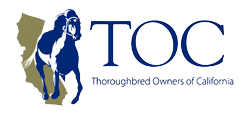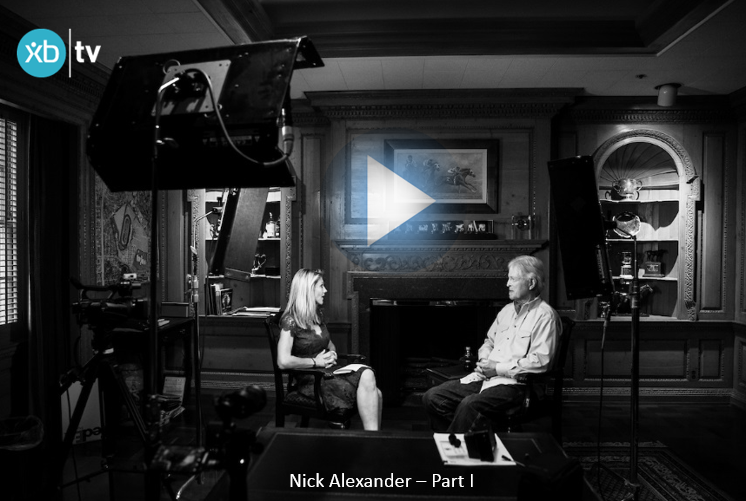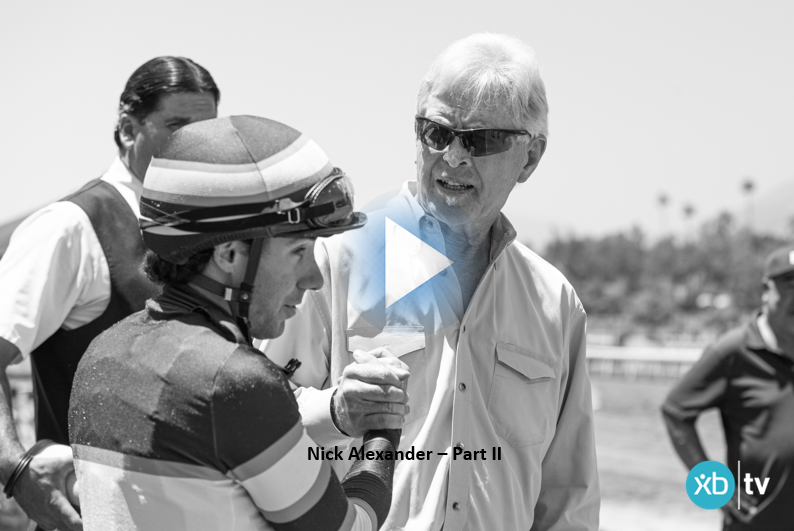SANTA ANITA PARK FEATURE
Nick Alexander is a staple throughout the Southern California horse racing scene as a respected owner, breeder, and local car dealership owner that just can’t ever seem to say “no.” XBTV’s own Millie Ball caught up with the Chairman of the Thoroughbred Owners of California recently to discuss horses, cars, and his deep rooted history in nearby Pasadena.
Watch Part I of XBTV’s video feature here
Watch Part II of XBTV’s video feature here
Katie Jones Photography throughout
Nick, you’re an industry leader. You’re actually also currently the leading breeder of Cal-breds in the state. Where did it all begin for you, your first memories of this sport of horse racing?
“I was raised in Pasadena, and my dad was a surgeon- my stepfather was a surgeon and he was friends with a jock’s agent a long, long, long time ago.
“So on the weekends he used to go to San Anita. I was maybe 10 or 11 years old. He didn’t want me to go with him because he liked to dress up and go to the Turf Club. He would give me a couple of picks and my mom would take me out and we’d sit in the grandstand. The first time we did I liked a horse named Gold Man. He was 10-1 and he won and I bet on him. And that was it, I was hooked.”
Growing up in Pasadena, was the racetrack like the ballpark? Was it something that kids did, they came and hung out here?
“Oh yeah. It was huge. I was looking at a picture in my pool room of Santa Anita’s parking lot from 1937 or ’38 taken from Huntington Drive looking at the back of the grandstand. There isn’t an empty parking spot, all those acres of parking and it was jammed packed. So it was a big deal. You know the Dodgers weren’t in town yet. There was a minor league baseball team, but there was no basketball, no soccer. If you liked to gamble, horses were the only way to do it. To do it you had to come to the track, couldn’t do it from your phone. You couldn’t do it anywhere else so yeah, it was a big deal.”
How did you get into selling cars?
“Well, I wasn’t a good enough student to be a doctor. That’s what my stepfather wanted me to be. My first job was in a Ford store down in Highland Park as a get ready boy when I was 14. That’s one of the people that, when a car comes in from the factory if the customer wants black walls and it has white walls, you’d change it and do a pre-delivery service on the car and that type of thing. I did that three or four summers and I made friends with one of the guys in the Sales department.
“At the end of the summer he said, ‘Next summer when you come back I’m going to be a manager here and I want you to come to work for me in the Sales department because that’s where the money is.’ Twisting wrenches isn’t that great a living compared to selling cars. So that’s what I did the next summer and it turned out that he was right. Later, a very famous car dealer by the name of Dominic Longo was working in this Ford store and he was my mentor. I went to USC for a couple of years and didn’t do very well, so I became a full time car salesman for him.”

So, being the founder of Nick Alexander BMW wasn’t a lifetime ambition for you from the get go?
“No, not at all. I never thought I’d be in a position to do that. I just got lucky. It’s one of those things, timing and being with the right people…I found out about this dealership in Huntington Park that was doing very poorly, although they had BMW. BMW was just becoming nationally popular. I tease about it being a freeway far from everywhere, nobody knows where Huntington Park is. There’s a very nice little man that owned the place and I went down to talk to him and all he wanted to do was get out and find somebody that would pay the rent and keep the place going.
“I had a very close friend who also started out selling cars. He had already worked his way up to being a dealer so he put up most of the money and we bought the place for almost nothing. Used the radio as a tool for getting people to come to Huntington Park. In Southern California, everybody listens to the radio. Everybody has to commute, and so at least twice a day you have an opportunity to have a one on one conversation with somebody on the radio. You’re not being bothered by your kids running around the house. You don’t get up to go to the bathroom during the TV commercials. You’re in your car and somebody’s talking to you. If you say something entertaining or meaningful, or provocative or whatever, and say it often enough to somebody, when they want to buy a car they’ll come see you. And that’s what we did.”
Where did the slogan “Nick can’t say no” come from?
“Almost offhandedly. I was under the gun to submit some copy for a weekend ad in the LA Times. You had to get your ad material in by a Thursday and I was always late. The salesman from times called three or four times saying, ‘we’re going to deadline, I need your copy.’ To get him off the phone I said, ‘just say Nick can’t say no’ and hung up on him.
“Funny enough, that weekend we did pretty well, and so we kept using it but that’s about as much thought that went into it. It was nothing really well founded, but it worked.”
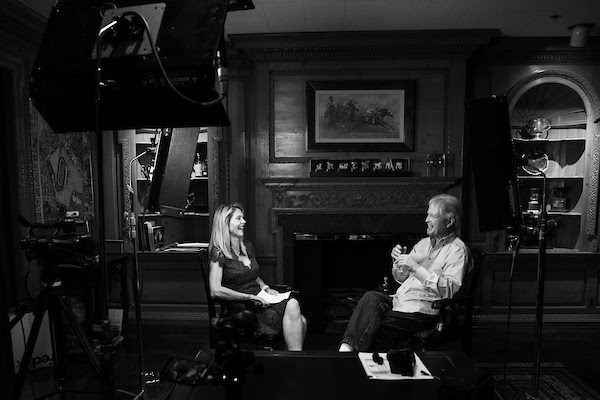
At what point in your life did you begin owning race horses?
“The first horse I had a piece of… it was the late seventies. I was working in a real estate office in Laguna Beach and hating life. A guy came to me and said we’re looking for a fourth partner to buy a racehorse. It’ll cost you five grand. We’re going to spend $20,000 on an unraced 2-year-old. I was bored to tears in my job and I thought, ‘cool, that would be really fun.’ So I scraped up $5,000. The horse ran second a few times I think, never broke his maiden, and eventually we lost him for about half of what we paid in a claiming race. That was it though, the needle was in my arm. I wanted to do it again, so we kept doing it.”
You had a pretty significant establishment up at Golden Gate, right? Is that where you started as an owner or was it more here in Southern California?
“No, it was here. Chay Knight was my first trainer and somehow I met Mike Mitchell. Chay liked to buy young horses and bring them along. At the time I didn’t have the patience for that and I talked to Mike Mitchell and he said, ‘let’s claim a few.’ So we did, and we did pretty well. The ones that weren’t doing well here, we’d send up to Golden Gate. That’s how the Golden Gate connection came in. We did very well with the horses we shipped up there, we had a lot of fun.”
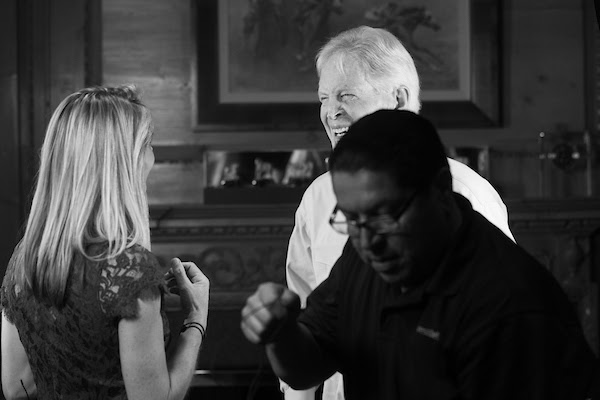
You mentioned Mike Mitchell, I know you were an owner of his and had a relationship with him for 30 years or so. How important was that relationship for you with growing your business and where you are today?
“Mike was the first guy that I identified with where he would take the time to explain why we were doing certain things. He was one of those innate guys who just understood horses. He could take a horse that was running short and train it a little differently, back off it a little bit, jog it on the training track, try it long, try it on the grass, or change the style. If it was running in front, take the horse back…and quite often he would find the key to that horse that the other person hadn’t found. I liked that. That was fun.”
You’ve had horses here in California for four decades. What’s specifically is it about you wanting to support California racing?
“Mostly it was financial. I couldn’t afford to go to the sales in Kentucky and spend big money for yearlings. The Cal-bred program fit me because I could claim mares, modest mares, breed them to California stallions and run them where they could make a living and prosper. Between the maiden bonus, the breeder’s bonus, the stallion bonus, the protected races for Cal-breds only, the extra money in open races for them…That all adds up.
“For a lot of years that all made the difference between profit and loss, or little loss and big loss or it’s just didn’t have to go as far to breed. We’d work in a few, if we had an empty mare, sometimes we’d ship back to Kentucky and to one of the more modest stallions and breed and then bring them back and make them Cal-breds, and that worked really well too. That was the initiative.”
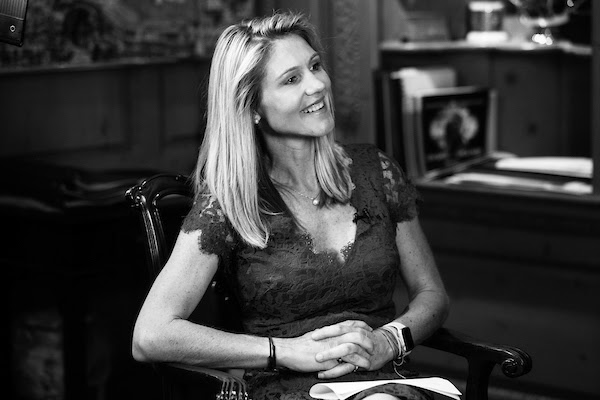
I know you have your farm in Santa Ynez, but was that your first breeding farm? Where did you first start when wanted to get into the breeding industry?
“Well, have you ever heard of a little place called Boonville?”
No (laughs)
“Boonville is in Mendocino County, Northern California. I had lived there in the early seventies, when I was kind of a hippie. I always loved the place. The first time I campaigned a mare that I thought would be a good broodmare, we shipped her to the ranch. I moved down here long after but still I had kept the property in Boonville. I shipped her up there and we bred her and campaigned her babies. By that time we had three or four more.
“It’s mostly Redwoods, sheep ranches, apple orchards, and then most recently, grapes. But it was a great place for horses, it was quiet. We were two miles off the highway at the end of a dirt road. The horses flourished. That was our first ranch. Then in 2005 finally, I was getting old and the drive up there was getting harder so we bought the place in Santa Ynez.”
You’re very much a family man. Do your wife, kids, grandkids…do any of them share your passion for this sport?
“Absolutely not (laughs). The day I die, the horses will be down the road.
“My daughter came to me when she was 11 and said, ‘At the girl’s club there’s a sign that says three riding lessons for $25. Can I take three riding lessons?’
“I said sure, I wanted her to be involved with horses. I didn’t know how much that would cost me over the next dozen years, because she got hooked and she loved jumpers. So she campaigned a couple really good jumping horses nationally and she was a junior jumper champion one year, and she rode in Grand Prix against the boys. The nice thing about that sport is that women are competing on equal ground with the boys. I was a horse show “mom” for several years, trailering her horses all over the country, going to horse shows. But she never wanted the rest of the deal. She didn’t like mucking stalls, she didn’t like trailer riding. She just wanted to be on the horse and ride and that was it.
“My son, went to a High School that I had gone to. A very rustic farm school up in the Santa Ynez valley, where they have a very motley string of horses that you can ride. He got involved during High School and was head horseman and in charge of about 30 horses but after he left, he went a different direction. And horses are no longer his thing.”
Your daughter and son now run Nick Alexander Imports. At what stage did you feel you wanted to step back and retire from that and maybe focus a little bit more on breeding?
“Well, two things. One, I wanted to spend more time on horses but I was losing touch with the generation that was coming up and buying cars. It was Gen X and the Millennials, people I really don’t understand. The internet was becoming the way to do business and I had always done business with radio advertising and I didn’t get the internet. My kids were of that generation, and they spoke that language, so it just seemed a natural thing to do. I think it was about 2003 that I finally told my daughter, it’s your turn, I’m outta here.”

Let’s focus on Grazen, who has been, to date, your most successful sire.
“Absolutely.”
Hazen was the dam. Tell us a little bit about how that’s been for you, the ride with Grazen?
“It’s phenomenal. I’m so fortunate that the breeding even occurred. Mike Mitchell and I claimed Hazen, I think, from Jack Carava, and she was a late running turf horse, just a router. I love that style. She won several races for us. She was out of conditions, and we thought we could get away with running her for $32,000 up at Golden Gate. There wasn’t a lot of active claiming there. She won, but Billy Morey claimed her from us. Fortunately though, she only ran one more time and was getting some issues. She wasn’t going to run anymore and the new owners weren’t breeders. So I called Billy and asked if I could buy the horse back, and got her back.
“At the time my breeding program was a science of who to breed to and how far they were from our ranch. Benchmark is only about five minutes from our place. I always admired him as a stallion so we decided to breed Hazen to him and got Grazen. He was precocious from the beginning and he had a very short career, but very successful career. We retired him after an injury. I was attached to him, I thought we’d try to make him our first stallion and bred him to whatever we had. His first crop showed he was doing a good job.”
What have been some of your favorite brood mares?
“Oh, well Hazen would have to be number one.
“Certainly Sunday Dress… produced with Tribal Rules… Sunday Rules who I think won nine times and a half a million bucks and four stakes. She beat the boys twice. She won the Don Valpredo against some really nice colts.
“And then, she had Tough Sunday, who is by Grazen. He was the one that almost killed her trying to get out when we were foaling him. He weighed 165 pounds at birth and got stuck coming out. By the time we got him out he hadn’t had oxygen for minutes and he was basically a dummy foal. He was blind and deaf, and had no nursing instinct. He could stand up but couldn’t lay down. He was just this big handsome sucker though. He was in the ICU at the clinic for days and they called me and said the colt isn’t getting any better and I better come over and think about putting him down. They told me I’d spent a lot of money but his mom had abandoned him because he couldn’t nurse, had no nursing instinct.
“So, the next morning I went over and walked by his stall and his eyes followed me as I walked by. I went inside the office and said, ‘he is making progress. He can see. He watched me walk by the stall, you’re going to have to try harder.’
“Over the next few weeks, his other problems went away, except that he never learned to nurse. After 40 days or so we took him home. We tried to get a nurse maid mare with him because his mother didn’t want anything to do with him. We couldn’t find one so we put mom and son in adjoining stalls with bars in between hoping that she would try to reconnect. After a few days they were nose to nose.
“We put them out in the pasture together with normal mares and foals and she raised him the rest of the way until we weaned. We had to bucket feed him every day though because he couldn’t nurse. Other than that though he was a totally normal foal. Now he’s made $350,000 or something like that.”
That has to be one of your most precious memories.
“Yeah, yeah. You learn… there’s so many good things you learn from breeding horses. You learn patience, you learn humility, you learn to take bad news, and you learn perseverance. This horse was a poster boy for all those things. He’s very human-like in his personality because he had so much attention being fed by humans constantly and monitored constantly. He’s just one of those horses that when you walk in the barn, if he’s at the end, you’ll hear him nicker. He wants some attention. He’s just a very, very cool horse.”
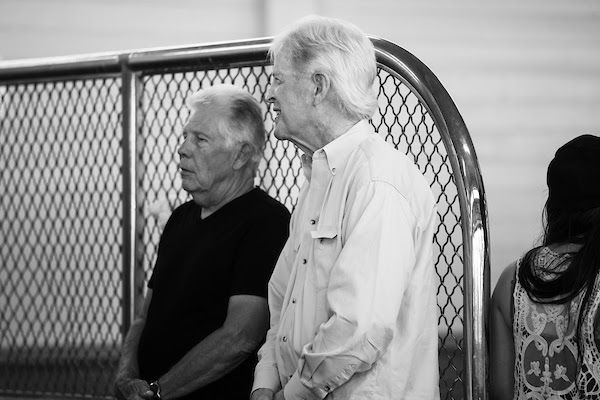
Are you superstitious?
“There are some things. I can’t stand it when someone says, ‘See you in the Winner’s Circle.’ I just hate that, it’s like the kiss of death, you know? Sometimes I hear somebody start to say it and I go, ‘Oh, sorry! I can’t handle that… it’s bad luck.’
“Anything except, ‘See you in the Winner’s Circle.’ (Groans) That one gets me. Let’s see, I have a couple of crappy old shirts that I like to wear here.”
You do?
“If you look on the wall of pictures, they are of me mostly in those two crappy old shirts. (Laughs)”
You seem competitive. Where does that competitive spirit come from? Who does it come from?
“I don’t know. It’s not my parents, they were pretty laid back. My friends growing up all went to the same school and we were the first group of little leaguers. They started a little league in Pasadena and there were only four teams so some of my classmates were on each of the other three teams and some were on mine. We would kill ourselves trying to beat them. Because the whole rest of the week you got to talk about it. So I think that’s when it started.
“As a car dealer everything is based on how many cars you sell. Your whole focus is being number one, to be able to tell people we sell more cars than anybody else. When you’re trying to sell a car, if there’s any impediment, you’ll do whatever you can to get rid of it. If you have to give the damn car away, just get that car out of here. Then, go on to the next one. I think that probably fueled me, and it comes over to the horses.”
And baseball, right?
“Oh yeah…”
You’re a huge Dodgers fan.
“Oh yeah, yeah. Running second is like kissing your sister, it’s just not that much fun. It’s not. I can’t help it. And I thought as I got older it would go away, but it doesn’t. For sure, there are still certain trainers I can’t stand losing to, and that I enjoy beating.”
(Laughs)
“It’s just part of the deal.”
You have an automotive hobby, don’t you?
“I did. I had a 15 year period where I went nuts collecting old Ford Mercury wood-bodied station wagons. When I was growing up those were the cheapest cars you could buy, because the wood was shot usually. In Southern California, they’d sit outside and the wood went to hell. So they were a $150 car, where convertibles were $500. In the early 1990’s I got the idea to put together a collection of every Ford Mercury that Henry Ford ever made with wood bodies. He was the only guy that made his own wood bodies, and he had the cheapest cars. He had thousands of acres of hardwood forest up in northern Michigan. So he used virgin timber, birch and maple to make these beautiful bodied cars that sold new for $900.
“I found guys that I admired as craftsmen, and we made a deal. We let them work out of the back of the dealership and I would run around the country looking for the perfect candidates to be restored, and they would do the work. We put together this collection of every wood-bodied car from 1932 to 1953 that Ford ever made. We’d travel to Dearborn, Michigan, Texas, all over the place. When we finally got it together and it was done, I sold it all. (Laughs)
“The fun part was finding them. It wasn’t fun when 60-something cars all needed to be driven, the batteries charged, leaking oil, etc. We put them all up for sale at an auction up in Monterey during Speed Week and sold them within three hours, gone. 15 years of working on it, but it was time.”


You have a couple of charities that are near and dear to your heart.
“Yeah.”
Why?
“Well one of the things I wanted to be when I was growing up, was a cop. It never happened, but I’ve gotten close to the CHP 11-99 Foundation…
“11-99 is a radio code for an officer in trouble. If a California Highway Patrol officer either gets hurt to the point where they can’t work, or is killed in the line of duty, the foundation will send them money for immediate expenses, funeral expenses, living expenses, pay their mortgage and put their kids through college. If you’ve ever thought about the life of a cop or a CHP officer every time they get off their motorcycle or out of their car and walk up to another car…they don’t know if it’s going to be the last breath they breathe. It’s just….
“And. if you look at the list of those that have gone down, I can’t remember the last time I saw one that wasn’t husband with kids. They are all young, brave, good guys. That’s my number one charity.
“Trust Republic Land is another one I really like. It is involved in helping people that own large tracks of land keep it from being developed. They’ll set up environmental trusts, where the land owner agrees to deed restriction so their land can never be developed, and by doing that, depreciates the value of the land back to what it would be for what you’re farming rather than if you put 1,000 homes on it. The way the laws are set up now is unless you do that, you’re paying property taxes on the potential value of the land, not what it’s producing. Through the Williamson Act and these trusts, you can keep people farming and keep people ranching that otherwise would have to sell out.
“Trust Republic Land has made some great saves along the coast, where the butterflies migrate every year. The Monarch butterflies, by the thousands, go to Santa Barbara, and the organization was instrumental in saving that ground from being developed. Lots of places around the state of California have been saved by them, so that’s my other passion.”
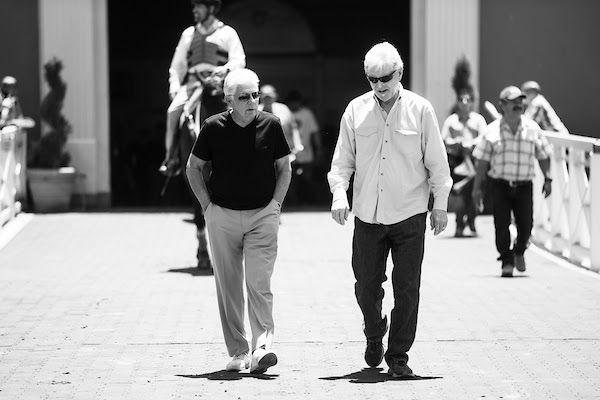
We talked about your slogan “Nick can’t say no” but I think probably the more recent slogan is “Nick the Negotiator.” You’ve been on the Thoroughbred Owners of California (TOC) as Chairman for six years. On behalf of the racetrack, we want to thank you for everything you have done for this sport. But, I also wanted to ask you what your main objectives are, what you feel you would love to accomplish in your time on the TOC.
“It’s getting harder and harder to do.
“I saw Santa Anita in its heyday and that’s always in my mind as to what I’d like to see again. I’m not sure that’s ever going to happen to the extent that it was, but it’s a phenomenal sport and in this day of social media and media that only want to promote bad news because that’s what sells….We have a lot of people’s opinion that we have to change. We’ve got at least two generations locally that don’t even know this place exists and have never seen what it’s like to go to the races, or to be around horses.
“So, trying to think how we can change people’s opinions with what we have to work with is a struggle. It’s what we spend time working on, but I can’t tell you the fix is right around the corner. You know it’s an uphill battle, because you pick up any newspaper now and the front page is about how many people were shot, what the politicians are doing bad, how bad it is, homelessness, everything is bad news and on a slow day it’s bad news from the racetrack. How do you fix that? How do you present the other side? Things like we care, I don’t think enough people see that, but we just need to expose more and more people to the positive side of racing. We have to do a better job of fixing some of the things that are wrong.”
If there was one person who is no longer with us, who you would love to still be here to enjoy your highs, your lows, maybe the difficulties that are going on right now…who would that be?
“Someone from the racetrack, or someone in my family?”
Somebody in your past, somebody who is up there looking down on us.
“My mom. She was a wonderful person, greatest mom in the world. She was a smoker and died at 63, which is 40 years ago I guess. She always would say, ‘let’s talk about it.’ She’d give a couple of sides to any issue and then ask me what I thought. But in the end, even when I was really, really young she’d let me make the decision, which worked to her advantage. When it turned out I was wrong, I didn’t have her to blame or anybody else. It was on me, because it was what I had decided to do after her good counsel. She wanted the best for me and she was able to see a little of it. We had some early success that she was still with us for. But she hasn’t seen my kids grow up, and now grandkids. And I’d like her… I hope that she knows.”
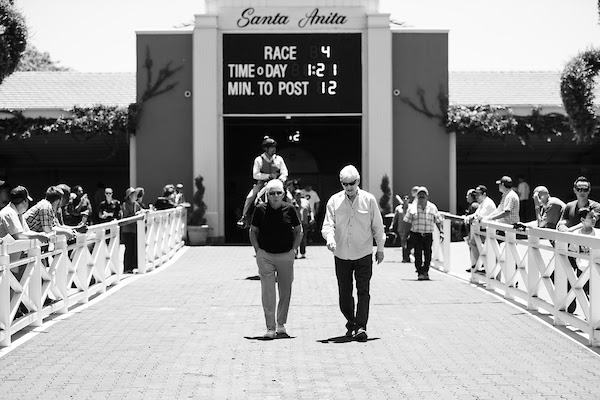
What legacy would you like to leave behind?
“You can accomplish anything if you’re determined enough. Take pride in the little things that you do well and build on those to make them bigger.
“I went to a Ranch-style high school, I think I spoke of it previously. It’s 3,000 acres out in the back of the Santa Ynez Valley, founded by a man who came from the east coast with the idea that kids should get a really good education, but also live simply, and learn to be self-reliant, to appreciate the outdoors. There was no hired help other than the teachers. The kids did all the maintenance, took care of the horses, fixed the fences, washed dishes and helped in the kitchen. There was a nurse and a cook, but everything else the students did. The teachers taught, but the senior class took care of the discipline. You looked forward to things like a camping trip or an afternoon on your horse. You didn’t have cars, you didn’t have cell phones. You built fires to heat the boilers that gave you hot water for a shower. You lived in these little redwood, wood floor shacks, and yet you got a really good college prep education.
“The headmaster was my surrogate dad. He loved horses and dogs. He loved simple things. That’s what I would like to pass on to the rest of my family and people I know. The greatest satisfaction I’ve had is small successes, nothing flashy, just continual…Building on one after another until you get to where you want to go. Be tough enough to take the losses because for every gain there’s a loss.
“A couple times I’ve been unemployed. The first thing I did was get a job doing anything. When I moved to Boonville, I got two offers. A sheep rancher offered me a job riding horseback gathering sheep for shearing for $1.65 an hour. I took the job, because I didn’t have one. Another job was driving a ditch in a vineyard putting in irrigation systems for minimum wage, $1.65 an hour. If I didn’t have a charge account at the local general store we would have starved probably, but I was working. When you’re working, you’re thinking. And you’re thinking, ‘this is kind of a crappy job, I want a better one.’ You’re not feeling sorry for yourself, because you don’t have time to. You’re working.
“I think the legacy I’d like to leave is this…I had a driving instructor one time say don’t look at the hood ornament. Look way down the road when you’re driving. You have to have a goal that’s way down there and you have to take little steps to get there. That’s what I’d like to pass on.”
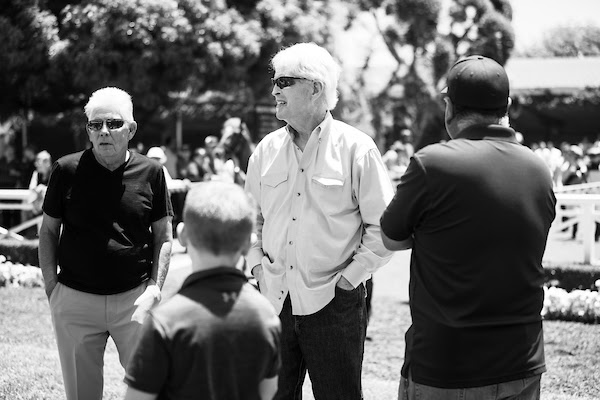
What would you say to a prospective owner nowadays?
“The highs are as high as you can get. Be prepared, because they don’t come along very often. Don’t do it unless you want to go out in the morning and hang around their stalls for a while, or go to their workouts. See the whole process. If you are just there to get in the Winner’s Circle, it’s probably not the right thing to do. Or, if you’re just doing it to go to Kentucky Derby it’s not the right thing to do. If you want to know more about horses and spend some time around the racetrack or a breeding farm or wherever, then I advise it.”

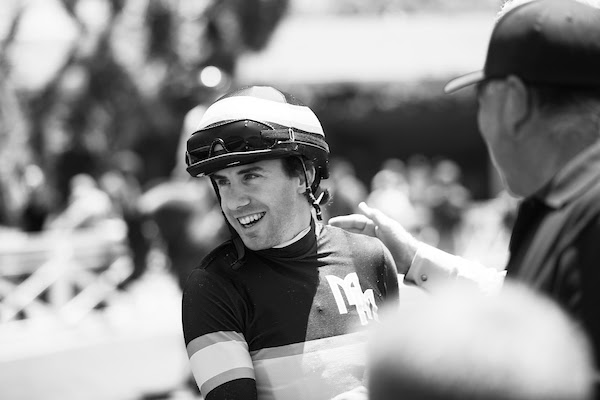
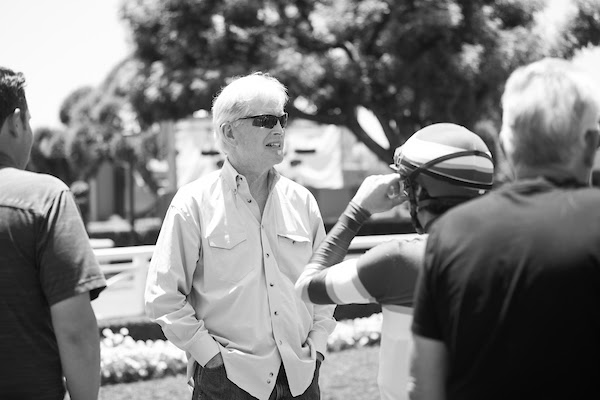
What would you love the general public to know about our industry that maybe they don’t, or most likely don’t?
“That horses teach patience and perseverance. They are a very, very unique animal. They have a lot of parts to their body that are kind of difficult. They have terrible digestion systems and they have a way of getting hurt all by themselves, just walking into things. There’s negative that you need to be able to tolerate to enjoy the successes. They are the greatest animal in the world. They teach you so many good lessons.”
You said there are some in the industry that you like being able to beat, but who would you root for if you’re not in the race? Are there other owners or trainers that you really admire from afar?
“Sure. There are a number of them. I admire Patty Gallagher. My own trainer Phil D’Amato is a perfect example of a guy that went to college to study horses and then apprenticed with other trainers and retained everything that he learned and always has a horse’s best interest in mind.
“That’s the main thing, that the guys that will turn a horse out when they need to be turned out. When they can call an owner and say sorry but your horse is going to the farm for a while. Mike Mitchell, of course is gone, but I learned so much from him. I like Eddie Truman. Eddie Truman’s a great guy. I’ve known him for a long, long time. He’s kept the same kind of owners for years. You can tell the best trainers are ones that people stick with for a long, long time. There’s some that are gone too, like Charlie Wittingham, I always rooted for him. Nobel Three I liked.
“Who else? My other guy, Steve Miyadi. A wonderful guy. Never received a vet bill more than $50 from Steve Miyadi (laughs). He has a different way of training a horse. If you look at his works, they’re always the slowest works of the day and not the fastest. But it works for him and it works for the horse he’s training.
“The guys that are true horse lovers, those are the ones I love.”
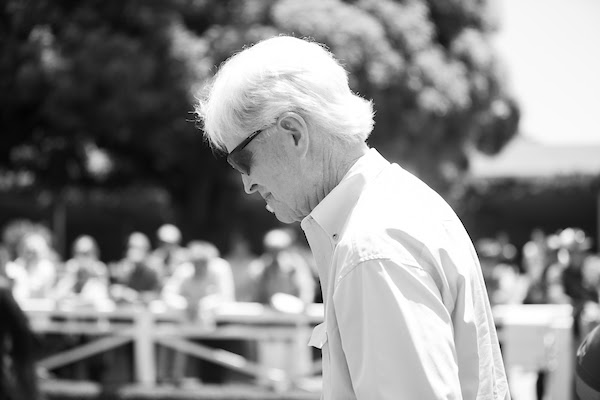
What’s your favorite horse of all time, maybe from the past, or even one of your own?
“Trying to think of one that’s not everybody else’s choice. I guess Seabiscuit maybe. Secretariat was the super star, I’m not sure he had a great personality though. He was a great broodmare sire.
“Of my own horses, I had one that really cemented my relationship with horses, Passionate Red. He was the kind of horse that after the race it was all I could do to get back to the barn, because he had just left it all out there. He was narrow, he wasn’t the prettiest horse in the world but he gave 110% every time. So I’d say Passionate Red.”
What’s your favorite part of being at the racetrack? The mornings, the afternoons…Is there a part of it that’s your favorite?
“It’s hard to say because just being here is good. I do love the mornings, the first time you get an inkling that you might have a good one. You see them work, the way they gallop out and the trainer goes, ‘hmm good one.’ So maybe that the most exciting part…
“I have a great picture of a horse from probably 30 years ago, getting a bath after a workout and the steam is coming off of him. The woman that took the photograph photo-shopped a little balloon above his head, like what he was thinking of. It’s him at the wire, winning a race. So, the mornings are just magic out, particularly in the fall. In October, when its 35 degrees and the steam’s coming off the horses, and the mountains are just bathed in daylight…That’s pretty magical.”
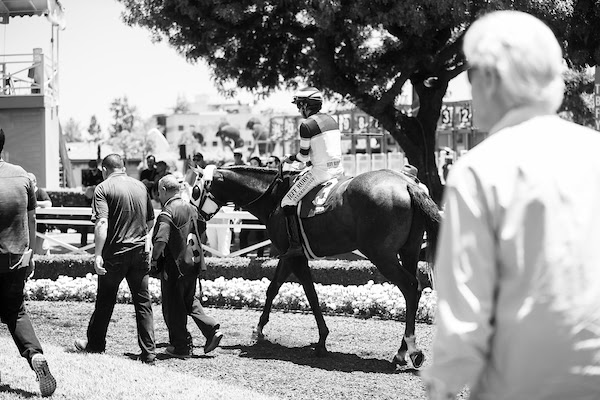
If you could have dinner with someone here or no longer with us, just one more time, who would that be?
“Mike Mitchell.”
You had a special relationship.
“He was my guy, yeah. He was single when I met him, kind of a wild man, but his wife Denise settled him down pretty quickly.
“He became a better trainer. Quit gambling, found religion. I think his training skills went way up. It’s funny, I’ve seen the whole lifetime. He was a great guy.”
I think that’s it.
“Well that was fun.”

Contributors:
Millie Ball
Amy Zimmerman
Joe Chile
Steve Scheidler
Alexis Garske
About Santa Anita Park
Santa Anita Park is a Stronach Group company, North America’s leading Thoroughbred racetrack owner/operator. The Stronach Group racetracks include Santa Anita Park, Gulfstream Park & Casino, Golden Gate Fields, Portland Meadows, Laurel Park and Pimlico Race Course, home of the world-famous Preakness. The company owns and operates the Palm Meadows Training Center in Florida, and is one of North America’s top race horse breeders through its award-winning Adena Springs operation. The Stronach Group is one of the world’s largest suppliers of pari-mutuel wagering systems, technologies and services. Its companies include AmTote, a global leader in wagering technology; Xpressbet, an Internet and telephone account wagering service; and Monarch Content Management, which acts as a simulcast purchase and sales agent of horseracing content for numerous North American racetracks and wagering outlets. The Stronach Group is North America’s premier supplier of virtual online horseracing games, as well as a leading producer of social media content for the horseracing industry.
About XBTV
XBTV is horse racing’s premier digital destination for racing news and handicapping insights. XBTV viewers can watch insider interviews, exclusive morning workouts and opinions from the sport’s most respected analysts. Owned and operated by The Stronach Group, North America’s leading Thoroughbred racetrack owner/operator, XBTV’s bicoastal footprint includes studios at historic Santa Anita Park in California and the modern Gulfstream Park in Florida. XBTV programming is available free online at XBTV.com.
